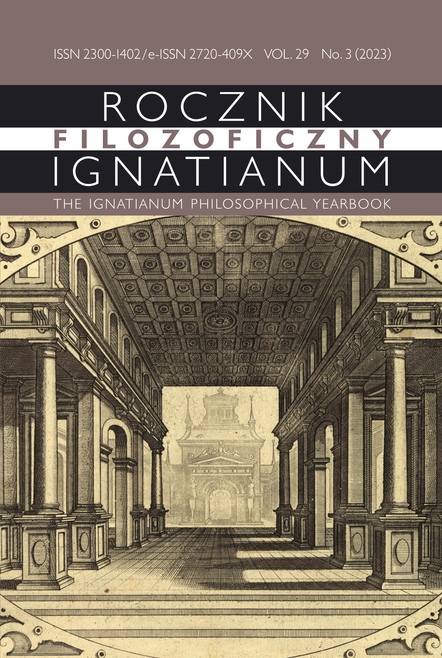Introduction
Abstract
In this, the latest volume of the Rocznik Filozoficzny Ignatianum, the first few texts are dedicated to the cultural significance of architecture. For time immemorial architecture has been a means of expressing ideas, harmony and proportion. In the ancient and medieval times the task of architecture was to reflect the principles of balance and symmetry found in the surrounding world. During the Renaissance architecture ceased being classified as a merely technical endeavor and began to be viewed also in a humanistic context. It was recognized that architecture is not merely proper building construction, but through the use of symbols and aesthetics it exerts a strong influence on culture and society. Both monumental structures (temples, university buildings, seats of power), as well as ordinary residences were designed to reflect the social needs of the time. Simplicity and symmetry vied with extravagance, dynamism and theatricality of form. The search for the root causes of these phenomena is the main thrust of the ideas presented in the texts below.
Copyright (c) 2023 Jesuit University Ignatianum in Krakow

This work is licensed under a Creative Commons Attribution-NoDerivatives 4.0 International License.
The Yearbook only accepts materials for publication that are free of all conflicts of interest, and that in no way involve conflicts over authorship, copyright, etc. The Editors will take action against any cases of plagiarizing, ghostwriting1, guest/honorary authorship2, etc. Where co-authored work is concerned, the Author listed first is expected to take responsibility for the submission, and is required to make clear the contributions of all of the Co-Authors involved. In the event of the publication owing its existence to funding dedicated to this purpose, this fact should be made clear: e.g. in any note of thanks/acknowledgement, or in a footnote, etc. Explicit notification should be given of any form of reprinting, with the appropriate evidence of permission to publish being furnished as required. Any impropriety on the part of Authors/Reviewers risks exposing them to appropriate responses from the relevant institutions.
______
1 This term refers to instances of a person who has made an essential contribution being omitted from the list of authors, or from notes conveying gratitude and/or acknowledgement.
2 This occurs when a person who has made either an insignificant contribution or no contribution at all nevertheless appears on the list of authors.





